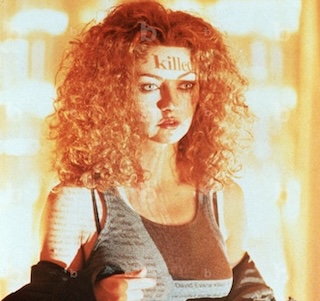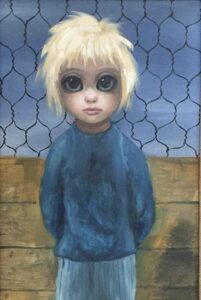When Stories Become Scars
Urban Legend arrived in 1998 at a moment when horror cinema was reshaping itself. Following the self-aware success of Scream, the film leaned on a different kind of familiarity—not the rules of slasher movies, but the whispered myths passed from one friend to another. Its hook was simple: what if the frightening anecdotes we heard growing up were real, and someone decided to turn them into a killing spree?
Beyond its premise, the film survives in memory because of the actors who carried it. Alicia Witt, Jared Leto, Tara Reid, Joshua Jackson, and Robert Englund shaped a narrative that could have easily veered into parody. Instead, their performances grounded the outlandish and reminded viewers why stories we half-believe still hold power.
An Ensemble That Defined the Film
Horror films often rely on archetypes, but Urban Legend worked because its cast made those archetypes engaging.
-
Alicia Witt (Natalie Simon) provided the film’s emotional anchor. Her performance gave weight to the role of “final girl,” balancing disbelief and determination as legends turned deadly around her.
-
Jared Leto (Paul Gardener), playing the campus journalist, embodied ambition. His charm and intensity made Paul both a suspect and an ally, keeping the audience uncertain of his role in the killings.
-
Tara Reid (Sasha Thomas) stood out as the radio host whose on-air death scene became one of the film’s most memorable sequences. Her charisma turned a potentially disposable role into something unforgettable.
-
Joshua Jackson (Damon Brooks) brought comic arrogance, leveraging his rising teen-idol status into a performance that blended humor and shock.
-
Robert Englund (Professor Wexler) gave the film its meta-gravitas. His portrayal of a folklore professor was layered with irony, given his legacy as Freddy Krueger.
These performances transformed what could have been a gimmick into a film that lingers in horror’s collective memory.
Folklore as the Engine of Fear
The brilliance of Urban Legend lies in its decision to weaponize stories the audience already knew. Unlike supernatural horror or slashers built on unique villains, this film leaned on existing tales:
-
The stranger hiding in the backseat of a car.
-
The babysitter who realizes the calls are coming from inside the house.
-
The myth of candy and soda leading to sudden death.
By recreating these moments on screen, the film tapped into anxieties already seeded in its viewers. The cast’s job was not to introduce new fears but to embody the familiar ones with enough sincerity to make them sting.
Alicia Witt and the Reluctant Heroine
Witt’s portrayal of Natalie is essential to the film’s lasting impact. She is not the loudest or flashiest character, but her performance steadies the narrative. Unlike other horror heroines of the era who leaned on sarcasm or bravado, Witt chose understatement. Her disbelief gave way to conviction gradually, mirroring the audience’s own shift from recognition to unease.
This arc allowed the film to treat folklore not as campfire nonsense but as material that could wound, frighten, and even kill. Witt’s seriousness legitimized the premise.
Jared Leto Before the Oscar
Before his transformation into a global rock star and Oscar-winning actor, Jared Leto played Paul Gardener with a mixture of charm and cynicism. His character’s determination to frame the murders as an exposé reflects both opportunism and integrity. Audiences could never quite decide if Paul was hero or villain, and that ambiguity added depth.
Leto’s performance hints at the risk and intensity that would later define his career. Within the chaos of Urban Legend, his presence elevated the journalist archetype into something more layered.
Tara Reid and the Radio Tower Sequence
One of the film’s most striking set pieces belongs to Tara Reid. As Sasha, she becomes trapped in her campus radio booth while the killer attacks. The scene works on multiple levels: it merges the intimacy of her voice on the airwaves with the helplessness of listeners who think it’s all part of the show.
Reid’s ability to switch from flirty confidence to genuine terror gave the sequence its impact. It remains one of the most cited moments in late-’90s horror, not because of special effects but because her performance turned the scenario into a spectacle of vulnerability.
Joshua Jackson: Humor Before Horror
Jackson’s role as Damon is brief but memorable. He channels cocky teenage energy into a performance that lightens the film before his abrupt death in the woods. His presence also doubled as a nod to the audience, given his Dawson’s Creekfame. That casting wink helped Urban Legend appeal to the teen demographic that fueled the slasher revival of the late 1990s.
Robert Englund: From Monster to Mentor
Casting Robert Englund as Professor Wexler was a masterstroke. Horror audiences carried decades of association between Englund and Freddy Krueger. Seeing him step into the role of a folklore lecturer added layers of irony.
Englund’s performance is understated but powerful. He embodies the authority figure who both explains the myths and becomes entangled in them. His presence reminds viewers that horror is a genre built on tradition; every story has a precedent, and every new film owes something to what came before.
The Killer in the Parka: Ordinary Anonymity
The choice to dress the killer in a parka with a fur-lined hood remains one of the film’s most effective details. Unlike a mask or supernatural deformity, the hood is ordinary, even forgettable. Its effectiveness lies in its banality—anyone could be behind it.
This anonymity resonates beyond the film. Fear doesn’t always come from monsters; sometimes it comes from realizing the ordinary can conceal danger. The cast played against this anonymity, heightening their characters’ paranoia and uncertainty.
Legacy and Nostalgia
More than two decades later, Urban Legend remains a fixture in horror marathons and streaming libraries. Its longevity is less about narrative originality and more about the combination of concept and cast. Watching the film today means revisiting Alicia Witt’s resilience, Jared Leto’s early charisma, Tara Reid’s dramatic turn, Joshua Jackson’s wry humor, and Robert Englund’s gravitas.
Impression
Urban Legend may not top lists of the greatest horror films, but its cultural footprint is undeniable. By marrying folklore with a charismatic cast, it carved its place in the late-’90s slasher revival. Alicia Witt, Jared Leto, Tara Reid, Joshua Jackson, and Robert Englund gave form to the very myths we whispered about growing up.
Their performances ensured that these legends did not remain abstract. They became real, visible, and memorable. And that is why Urban Legend continues to echo long after the credits roll: the stories linger, but it is the faces that made them impossible to forget.
No comments yet.








